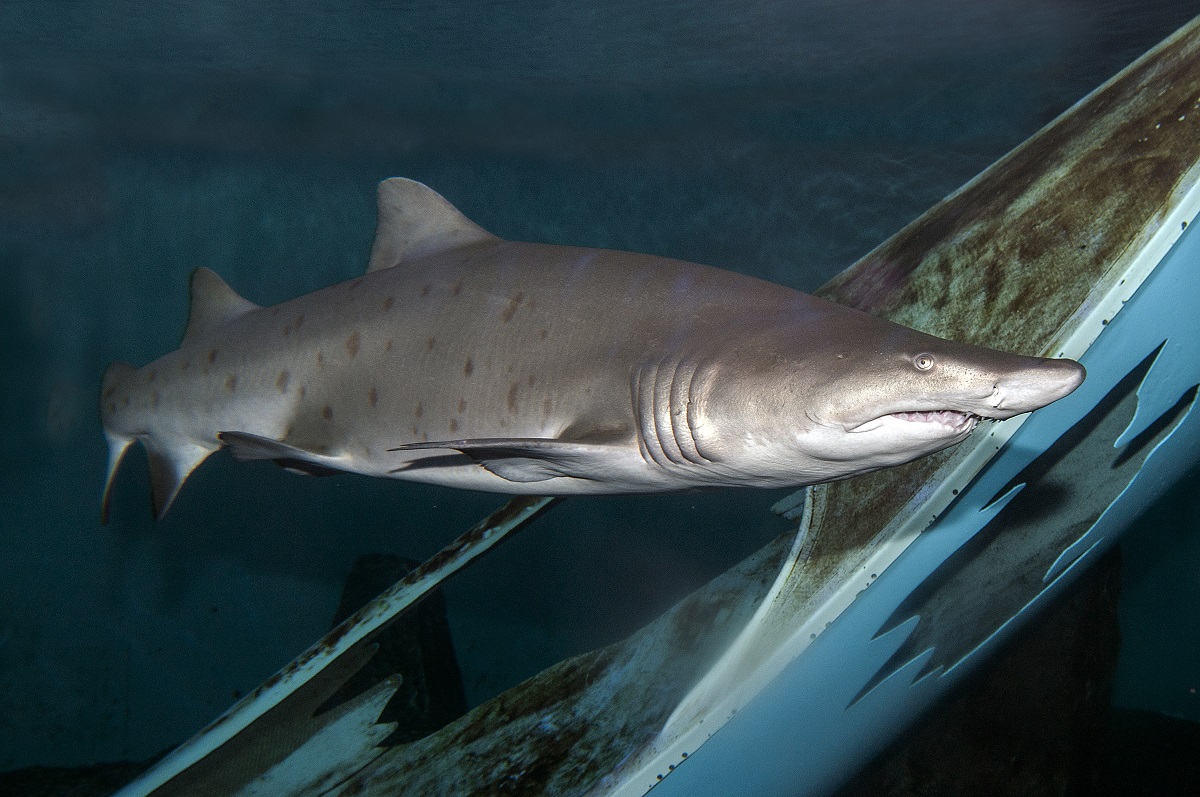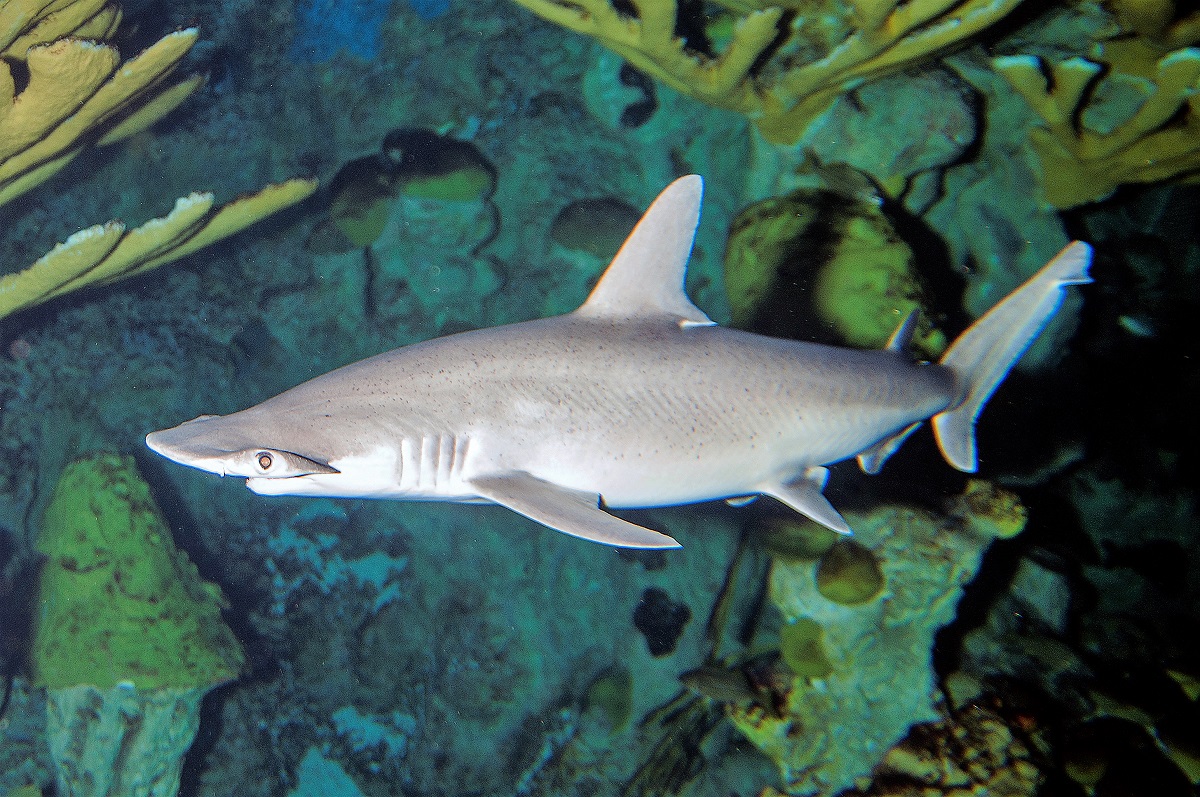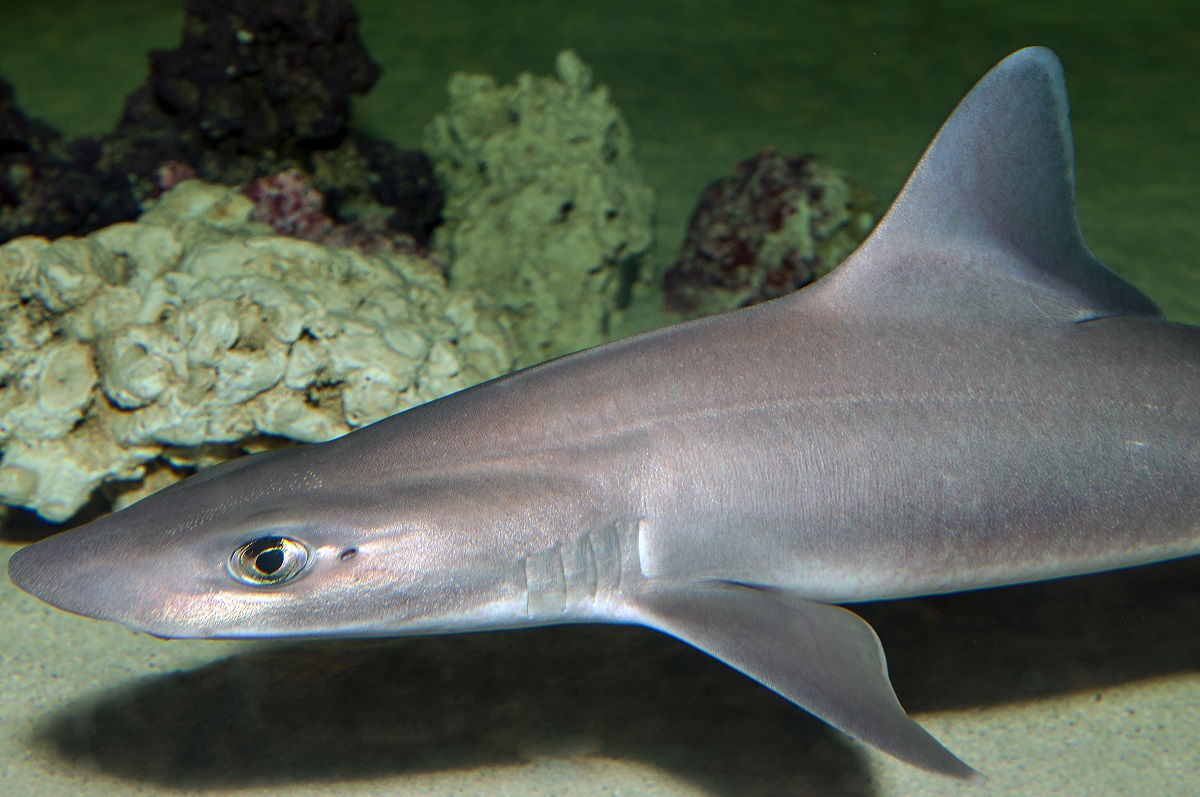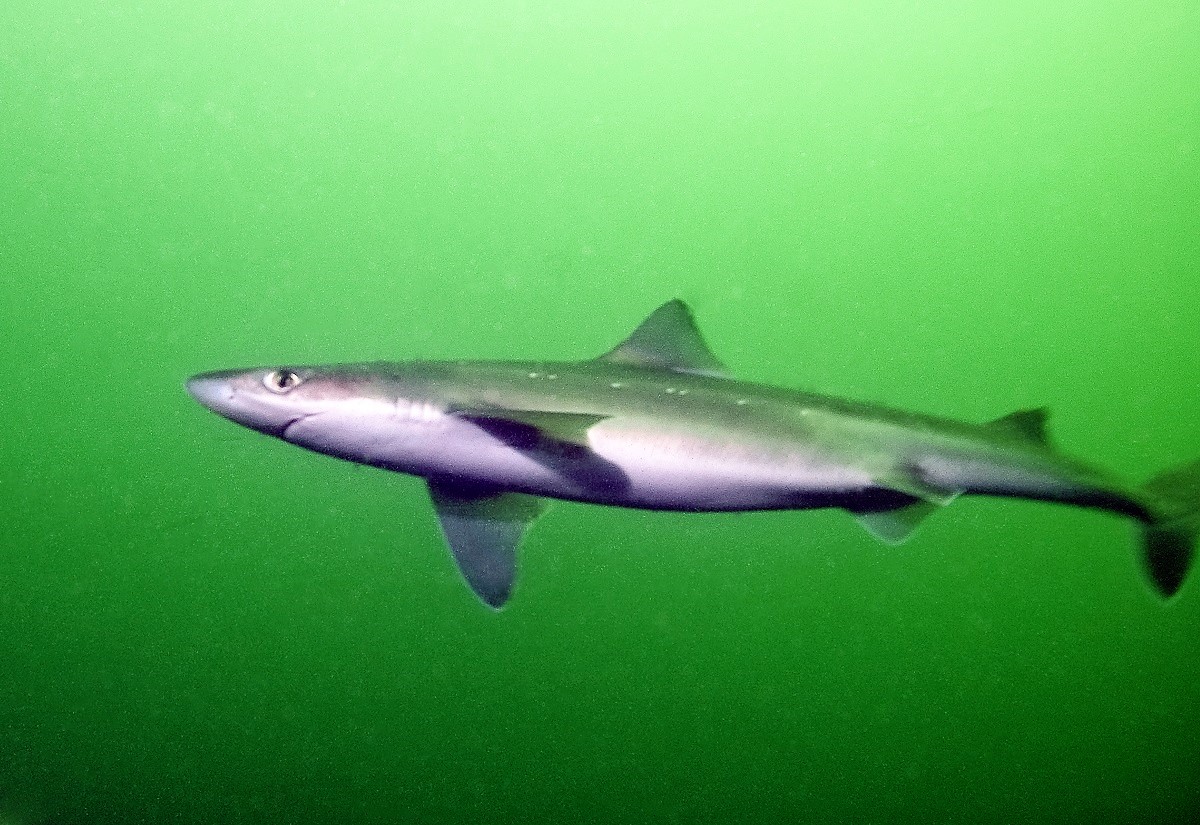
While “shark attack” is an often-used term, it’s not really accurate because sharks don’t seek out humans to “attack,” they’re just doing what comes naturally in the wild.
Sharks are opportunistic feeders and occasionally bite a surfer or swimmer if they venture into murky waters and splash a lot at the surface. This splashing action sends the shark a signal that you may be wounded, and therefore an easy meal.
Supporter Spotlight
North Carolina sharks do not act like they are portrayed in the movies. A shark will not stalk your boat, or jump up and take down a helicopter because they do not like you, or your passengers. Most shark species have a comparatively small brain in proportion to their body size, and hunt by instinct, not because of hatred, or dislike of any human.
There are about 73 species of shark that live or pass through North Carolina waters each year. The availability, and numbers of the various species changes with each season.
As this is Shark Week, which began Sunday and ends July 18, we will talk specifically about those found in area waters during the summer. Shark Week originated 33 years ago on the Discovery Channel.
It is important to note that if you choose to target fishing for these beautiful creatures, you are required by law to use a circle hook at all times.
“North Carolina’s coast is a very sharky place. The fact that important shark habitat includes the state’s estuaries often surprises locals and visitors alike,” said Chuck Bangley, a former graduate student at East Carolina University and writer for NC Sea Grant’s Coastwatch magazine. He is currently a postdoctoral fellow at Dalhousie University in Nova Scotia, Canada.
Supporter Spotlight
“So far, my surveys and North Carolina Division of Marine Fisheries data have identified a dozen shark species in North Carolina estuaries. Many of those occur often enough to be considered regular members of these ecosystems. The murky waters conceal crucial feeding grounds for these predators, many of which are simply migrating through as they journey up and down the East Coast,” he said.
Sharks are actually beautiful animals that are 100% designed to feed and catch their food — fish or marine mammals — not people.
Their streamlined design of long and tapered bodies as a general rule, large tail or caudal fin for quick bursts of speed, rigid dorsal or top fin for stability while swimming, sensors on their noses to detect motion, or sound waves in the water, and an incredible sense of smell allows a shark to detect exactly where a single drop of blood is coming from many miles away.
David Behringer, North Carolina Division of Marine Fisheries shark biologist, told Coastal Review that the division does not sample nearshore ocean areas but for inshore water sampling, they most frequently encounter during summer months Atlantic sharpnose, bonnethead, sandbar, bull shark, smooth dogfish, and blacktip sharks, in order from most frequent to least.
“In addition to inhabiting inshore waterbodies, these species are also found along North Carolina’s ocean beaches,” he said.
“We do not encounter sand tigers in our inshore sampling because they stay in the ocean and do not spend time in the areas we sample, but they are another fairly common shark species in North Carolina,” Behringer continued. “They can be caught by recreational surf fishermen and are also encountered while snorkeling and scuba diving at many of the nearshore wrecks. Although they have quite a menacing set of teeth, they are very docile.”.
During the summer months off the North Carolina coast, the Atlantic sharpnose shark is the most commonly occurring shark species in state waters. However, during winter months that would be the spiny dogfish.

Let’s take a closer look at several species you may find during the warmer, summer months.
The Atlantic sharpnose shark is the single, most common shark off of North Carolina every summer. These are part of a small coastal shark group managed under the National Marine Fisheries Service Fishery Management Plan for Atlantic Tunas, Swordfish and Sharks. The group also includes the requiem species of blacknose, and finetooth sharks, while the bonnethead is a member of the hammerhead species.
“Atlantic sharpnose sharks are a small shark species that have long, slender bodies with elongated snouts, which is where they get their name. They are a brownish-gray color on top and have a white underside. Juveniles have black edges on the dorsal and caudal fins that fade as they become adults. The species is found inshore in the surf zone, bays and estuaries, but also inhabit shallower offshore waters. They grow to about 4 feet,” Behringer said.
Atlantic sharpnose sharks are commonly found in the western Atlantic from New Brunswick, Canada, through the Gulf of Mexico, and are commonly caught in U.S. waters from Virginia to Texas. This is the species you are most likely to catch off of North Carolina waters during the summer.
“Females mature at around 2 years of age in the Atlantic when they reach approximately 2 feet in length, and at around 1.3 years old in the Gulf of Mexico when they are reach about 25 inches in length. This species can live to be up to at least 18 years of age,” he said.
In both the Atlantic and Gulf of Mexico, Atlantic sharpnose sharks mate annually between mid-May and mid-July in inshore waters. After mating they migrate offshore to deeper waters. The mother feeds the pups through a placental sac and after a gestation period of 10 to 11 months, the females return to nearshore areas to give birth in June of each year.
“Sharpnose sharks give birth to around four pups each year. Atlantic sharpnose sharks eat a variety of small fish, as well as invertebrates such as worms, shrimp, crabs, and mollusks. Large carnivorous fish, including large sharks, eat Atlantic sharpnose sharks,” Behringer said.
Sandbar sharks can be found off North Carolina during summer months. This brownish-gray shark has a recognizably large and triangular dorsal fin and somewhat long pectoral fins. It averages 6 feet long and about 110 to 150 pounds.
True to its name, this shark prefers the sandy bottoms of coastal areas, and is known for seasonal migration like many other requiem sharks. Because sandbar sharks have such a long growth and reproduction cycle, it is earning selected protected status in many areas.
Since this species prefers smaller prey and has a tendency to avoid beaches and the surface, the sandbar shark poses little threat to humans. Although it has been rarely associated with attacks on humans, its size makes it potentially dangerous.

“Bonnethead sharks are also found in North Carolina waters. They have an elongated front nose that allows the shark to see in different angles and directions than most other sharks in the ocean. They have gill slits for breathing. This shark is known for its’ broad, smooth, spade-like head, they have the smallest hammerhead of all members of this shark family. Their coloration ranges from a gray-brown above to lighter on the bottom. These too, are a rather bashful and harmless shark to humans,” said Behringer.
Their bodies taper to points at both the snout and the tail, making the animal very streamlined while moving through the water, and greatly lowering the drag created by the salt water. Their snouts are covered with sensory organs that pick up electrical signals from potential prey.
“Bonnethead sharks are from the family Sphyrnidae, which is composed of all the hammerhead species. Bonnethead sharks are much smaller than other hammerhead species, such as the smooth hammerhead, and great hammerhead, and reach a maximum size of only 5 feet. This species is found in the warmer waters of the western Atlantic and the eastern Pacific. It ranges from New England, where it is rare, all the way through southern Brazil, and from southern California to Ecuador. During the summer it is common in the inshore waters of the Carolinas and Georgia,” Behringer said.
The bonnethead shark is a more social shark that swims in small groups of five to 15 individuals in a school. They will feed mainly on crustaceans, consisting mostly of blue crabs, a North Carolina specialty, but also shrimp, mollusks and small fish.
“Bonnetheads are viviparous, meaning the female will nourish the embryos internally and give live birth, produce eggs that are held and nourished in her internal reproductive system until the young are mature enough to be released to the outside,” he said.
This species is the fourth most common shark seen during the summertime in North Carolina waters.
Behringer explained that smooth dogfish have a slender body with two dorsal fins nearly equal in size, and reach a maximum size of 5 feet.
“The second dorsal fin is closer to the caudal tail, or back fin of the shark. The gap between the first and second dorsal fin is roughly equal to the distance between the shark’s snout and the first dorsal fin,” he said.

Smooth dogfish are often misidentified as a different species, the spiny dogfish, but there are some notable differences that can be used to distinguish the two species.
“Spiny dogfish have a small spine in front of each dorsal fin and they also have white spots along the side of their bodies. Smooth dogfish do not have spines or spots. Also, smooth dogfish have pelvic and anal fins, while the spiny dogfish only have pelvic fins,” he said. “Additionally, smooth dogfish are most commonly in North Carolina waters in the warmer summer months, while spiny dogfish are most frequently encountered during winter months. Smooth dogfish, are one of the most commonly caught shark species along the North Carolina coast, and can be caught by boats, shore, and pier fishermen.”

Populations of some shark species have been in decline for many years prompting state and federal management agencies to implement many catch restrictions to control the numbers of sharks being removed from the population. Possession of many species are against the law. Because sharks can be very difficult to identify, fishermen should be very careful that they are actually removing the correct species of shark from local waters.
Bangley explained that blacktip sharks are among the larger sharks in the sounds, reaching lengths of 8 feet, although most measure 6 feet or less.
“They occur in ocean waters from late spring to late fall, and usually move into the sounds during the summer and autumn. These fast predators chase schools of menhaden and mullet, and will sometimes make spinning leaps out of the water while feeding. Recreational fishermen target these sharks for the strong fight they can put up when hooked,” Bangley said, adding that blacktip sharks have black margins on every fin but the anal fin. The leading edge of their dorsal fin starts just above or slightly before the trailing edge of the pectoral fin.
Bull sharks, which can reach 10.5 feet in length, are the apex predators of the North Carolina sounds, Bangley added.
“They can tolerate brackish and fresh water, and for that reason can be found in nearly any body of water that has a connection to the ocean. Adults and juveniles have been sighted in the Newport, Neuse and Pamlico rivers, and even parts of the Albemarle Sound. Bull sharks attack large prey, as evidenced by bite scars on resident bottlenose dolphins in the Neuse River and reports of large red drum eaten off fishermen’s hooks. This species can be dangerous to humans and should be treated with caution. Bull sharks are recognizable by their wide body, blunt nose and proportionally small eyes,” Bangley continued.
The spinner shark is a close relative of the blacktip shark and shares its habit of making spinning leaps out of the water. Spinner sharks can grow larger than their blacktip cousins, reaching 10 feet. They can be told apart from blacktips by their sharper, longer snout, a dorsal fin with a leading edge starting after the trailing edge of the pectoral fins, and a black-tipped anal fin.
“Finally, sand tiger sharks can grow to 12 feet and can be found year-round in North Carolina waters, especially around habitat that includes shipwrecks and live-bottom reef habitat. Developing sand tiger sharks will feed on their own siblings in the womb until only two are left, and at birth they are more than 4 feet in length,” said Bangley.
Even though they have a rather savage start to their lives, and look very scary with their sharp, protruding teeth sticking out from their jaws, sand tiger sharks are usually quite docile around humans during daylight hours, which makes them popular with scuba divers and at aquariums.
With their proportionally small fins, pointed snouts and jagged teeth, along with large dark spots running along both sides of their body, sand tiger sharks are easy to tell apart from any other shark found in North Carolina.
Sharks are cool critters that we share the ocean. They are to be respected, but not feared. Use common sense when you enter their domain and you will not have a problem with them. If you surf, swim, or fish, just do not go into water that is very murky, wear something shiny around your neck, or wrist, and avoid going in the water with an open wound, or bleeding fish hanging from your hip. Remember that we are visitors in their home, and show them the respect that they deserve.








